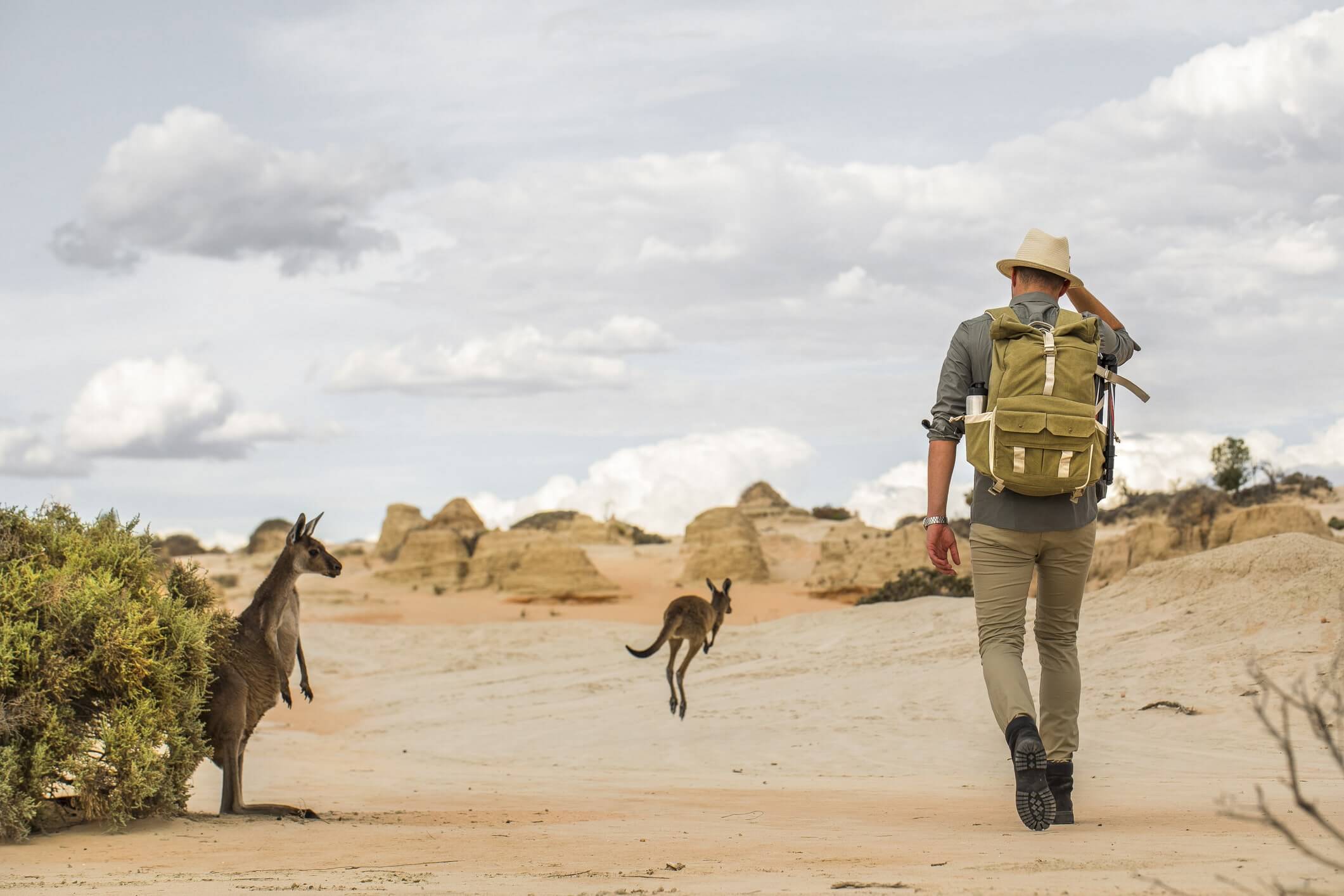From a UNESCO World heritage-listed island accessible to a happy few, to Tasmania’s oldest national park, national natural wonders for you to explore are aplenty.
Australia has an incredible bounty of natural wonders to add to your bucket list. We’ve been on the lookout for sustainable travel experiences for you so you can support the conservation efforts of threatened natural environments and endangered species, see wildlife, and make travel decisions based on your impact on local communities all while relaxing in luxury. Here’s our top five national green travel destinations.
Freycinet National Park, Tasmania
One of the two oldest national parks in Tassie, along with Mount Field National Park, Freycinet is mostly famous for the turquoise waters and unspoilt white sand of Wineglass Bay. But beyond the photogenic white curve of its beach, best enjoyed from the top of Mount Amos, Freycinet has many well-preserved natural highlights waiting for you to explore.
The Freycinet Peninsula Circuit, a two- to three-day bushwalking loop, is the ideal way to experience a little bit of everything the park has to offer, from the secluded Hazards Beach and the picturesque campsite of Cooks Beach to the summit of Mount Graham. If you aren’t up for the 46km eco-friendly adventure, you can opt for a shorter trail, such as the Wineglass Bay Lookout walk. As one of Tasmania’s ‘60 Great Short Walks’, it offers rewarding Wineglass Bay views and whale or dolphin sightings as an occasional bonus for the lucky ones.
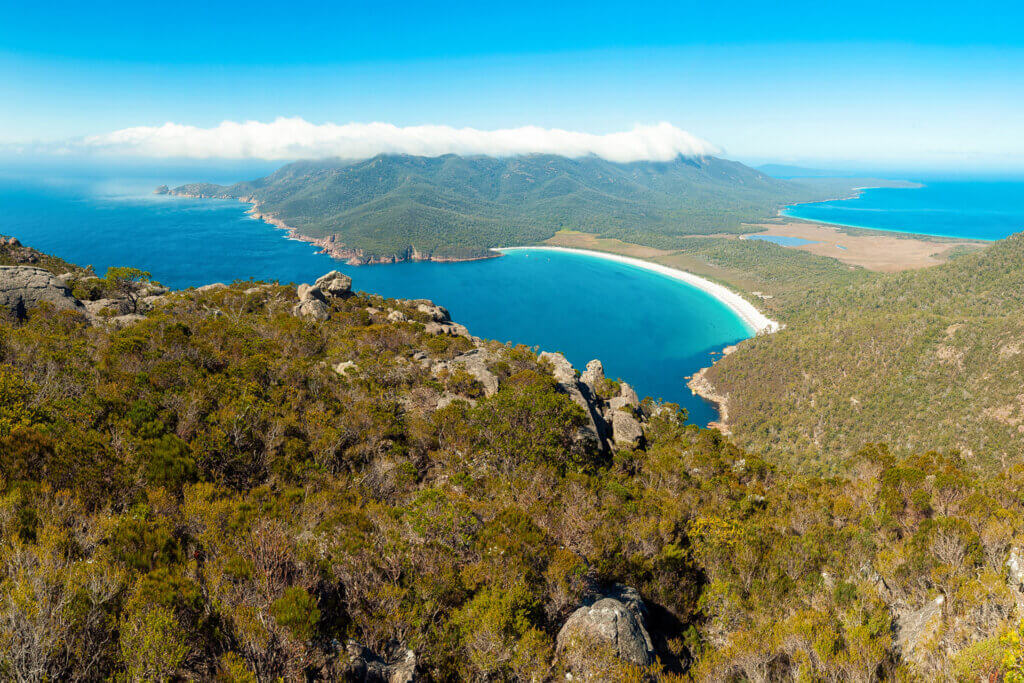
Where to stay:
Opened in 2015 with environmentally conscious travellers in mind, Freycinet Resort has the national park on its doorstep. It has eight studio cabins boasting panoramic views of the Tasman Sea and two bush retreats overlooking the Freycinet Peninsula. This is the ideal spot to get immersed in nature, with local wildlife all around.
Green travel tip: Waste reduction, water and energy efficiency, and local ingredient sourcing are championed throughout the resort, making it a conscious choice if you’re planning a trip.
Kangaroo Island, South Australia
This wildlife haven off the coast of South Australia is home to an abundance of native animals. Visit Seal Bay sea lion colony to spot these endangered animals in their natural habitat and gain a better understanding of the conservation efforts in place. You can also join a wildlife tour to spot koalas, kangaroos, birds, and echidna, and explore the island’s geological wonders, such as the aptly named Remarkable Rocks – granite boulders formed centuries ago – and Admirals Arch, a natural rock arch sculpted by erosion and home to a colony of fur seals.
What’s more, wineries and distilleries are scattered across the island; we recommend a stop at False Cape Winery for a glass of its award-winning Willson River Riesling, and at Springs Road Wines to sample organic, estate-grown wines.
The famous Kangaroo Island Wilderness Trail, a five-day bush walk stretching more than 60km, was devasted by the summer 2019/20 bushfires. However, a modified trail has reopened, allowing you to walk accompanied by licensed tour operators. Heading to the island to explore its jaw-dropping nature is also a thoughtful way to support its community and the species greatly affected by the bushfires.
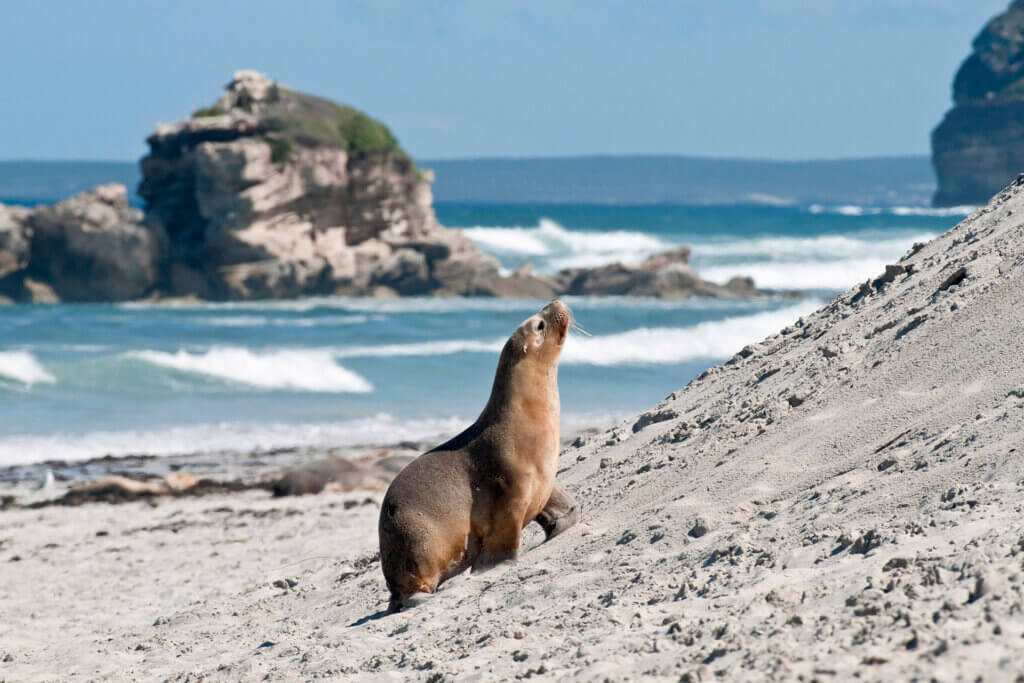
Where to stay:
The three secluded self-contained luxury villas of Ecopia Retreat give you front-row access to the nature and wildlife of Kangaroo Island. The area is remote and yet you’re just a 20-minute drive from Seal Bay or Little Sahara.
Green travel tip: The villas are entirely equipped with eco-friendly appliances, powered by an off-grid solar energy system, and use recycled rainwater.
Margaret River, Western Australia
The picturesque town in the Shire of Augusta-Margaret River – one of four Australian destinations with an ECO Destination Certification, which recognises local government and community efforts towards all aspects of regional sustainability – is an ideal base to explore the region known for its wine and surf culture.
From a two-hour horse ride through bushland and into the Rapids Conservation Parks and State Forest areas and a full-day cycling tour along the Margaret River wine trails (electric bikes are available if you’re planning to indulge!) to a Boranup Forest tour on an electric, and silent, quad or a river canoe trip, non-motorised activities offer eco-friendly ways to explore the region. We also recommended digging deep into the local farm-to-table culinary ethos at one the region’s farms, such as Fair Harvest, which has championed permaculture since 1995, and enjoying a meal at one of its celebrated tables, including Arimia, Glenarty Road, and Voyager Estate.
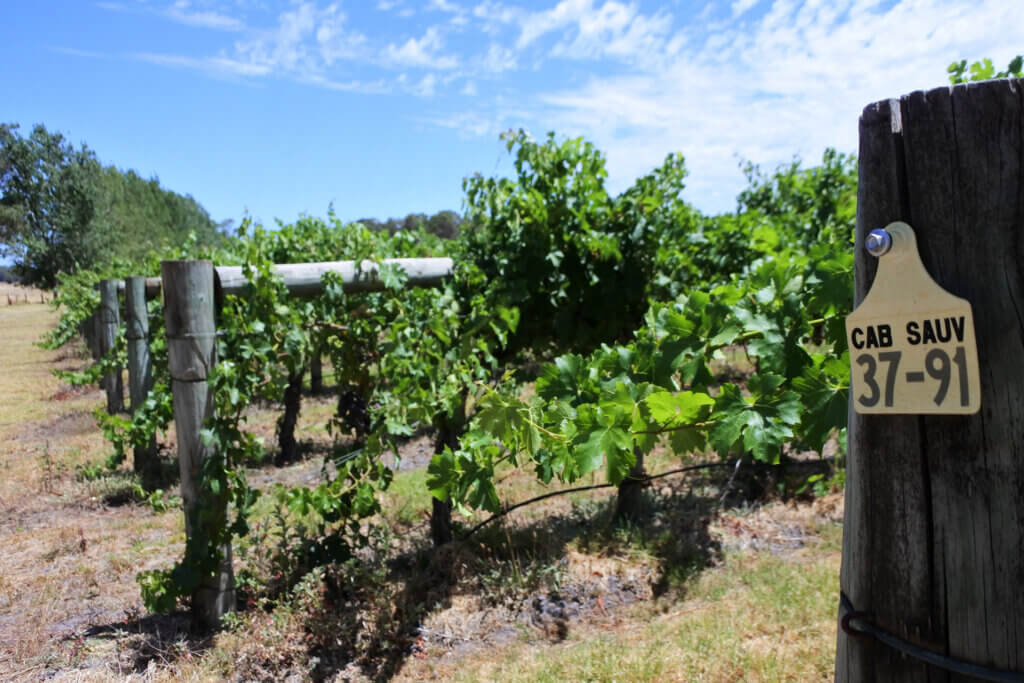
Where to stay:
A five-minute drive from the town of Margaret River, Burnside Organic Farm offers luxurious self-contained passive solar bungalow accommodations on a 15ha farm featuring a vineyard, an avocado orchard, and vegetable gardens.
Green travel tip: While staying in a bungalow, enjoy farm and nature experiences to get a better understanding of how the farm and winery work – and how they’re integrated with their natural environment.
Lord Howe Island, New South Wales
With a maximum of 400 visitors allowed at any one time, this tiny island is a preserved subtropical paradise for the happy few. Home to the world’s southernmost natural coral reef, the UNESCO-listed island is also considered to be an outstanding example of an ecosystem developed from submarine volcanic activity. A visit is therefore all about natural wonders and you can look forward to discovering the sparkling waters of Ned’s Beach and North Bay, getting up close with native bluefish while snorkelling at Erscott’s Hole, and hiking to the summit of Mount Gower. Experience the island’s reputation as Australia’s greatest bird-watching destination by standing a few metres away from rare species, such as providence petrels and red-tailed tropicbirds.
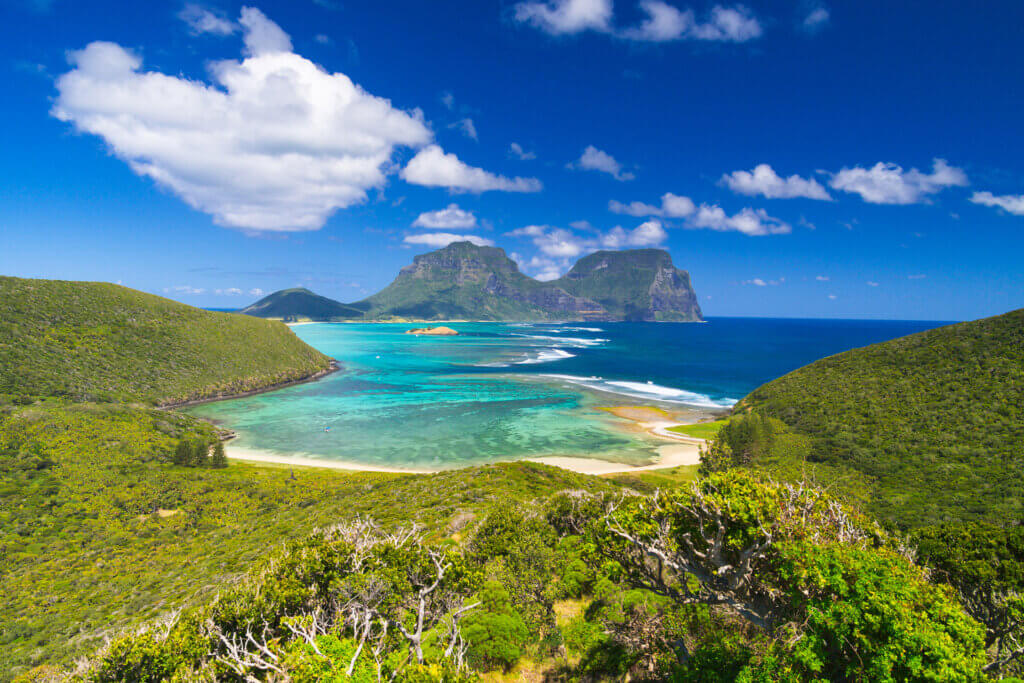
Where to stay:
The limit on visitors contributes to making the island special, but it also makes it hard to book one of the few available accommodations – so remember to plan ahead. A beach house-like luxury retreat, Capella Lodge boasts jaw-dropping views of the ocean and Mounts Gower and Lidgbird from its nine suites. Take in the preserved beauty of Lord Howe Island from your private deck with plunge pool, indulge on freshly caught local fish and just-harvested ingredients at the restaurant, and toast sunset at the open-air bar after a day of exploring rocky coves, pristine beaches, and subtropical forests.
Green travel tip: Capella offers complimentary mountain bikes and e-bikes for hire to explore the island at leisure, in an eco-friendly way.
Ningaloo Reef, Western Australia
Another UNESCO World Heritage site, Ningaloo Reef is found off the coast of Western Australia. Snorkelling is a must, as this is your chance to swim with whale sharks (March to July) and humpback whales (July to October) that migrate past the reef, as well as turtles and tropical fish. If you’re more at ease on the water than in it, you can join a guided sea kayak tour and paddle on turquoise lagoons or hop aboard a glass-bottom boat. Ningaloo Glass Bottom Boat uses a Mercury FourStroke engine on its vessels to minimise its environmental impact, and partners with scientists to support the preservation of Ningaloo Reef’s ecosystem.
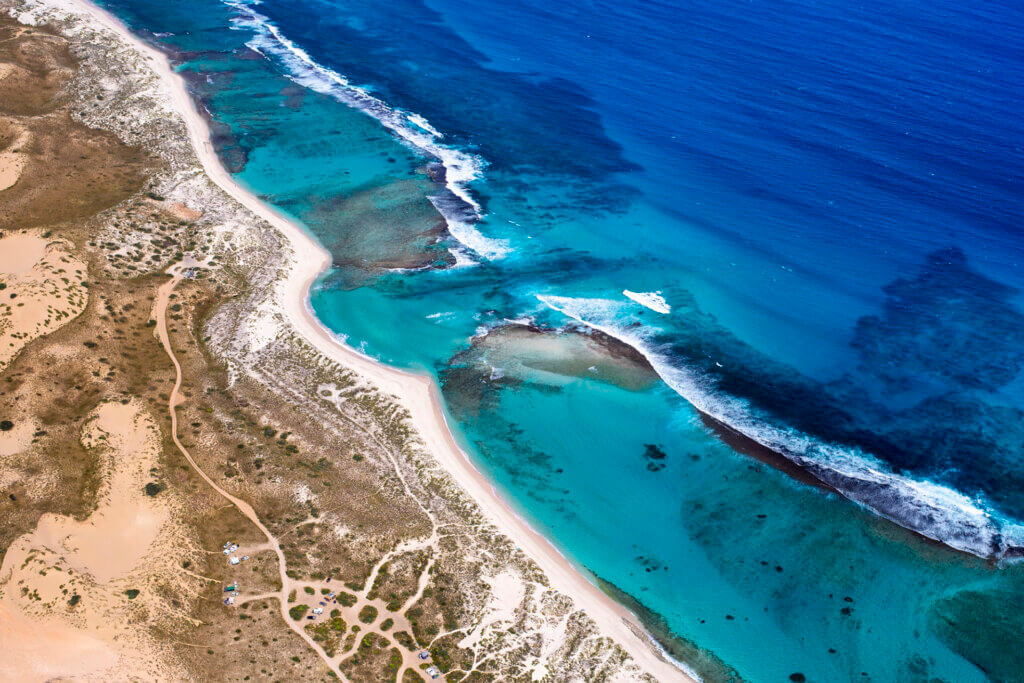
Where to stay:
The 16 eco-luxe tents of Sal Salis are hidden among the dunes overlooking Ningaloo Reef. Just a few metres from the UNESCO-listed site, you can enjoy a true glamping experience, including your own en suite bathroom. Snorkel gear and kayaks are available, and you can experience guided walking tours of the gorges of Cape Range National Park, as well as stargazing.
Green travel tip: Five percent of Sal Salis’ turnover goes to Western Australia’s Department of Biodiversity, Conservation and Attractions, and Parks and Wildlife Service to support its conservation efforts.
Thinking about your next eco adventure? With Westpac Concierge, you’ve got access to on-the-ground travel experts, who are primed to help you plan your trip.



